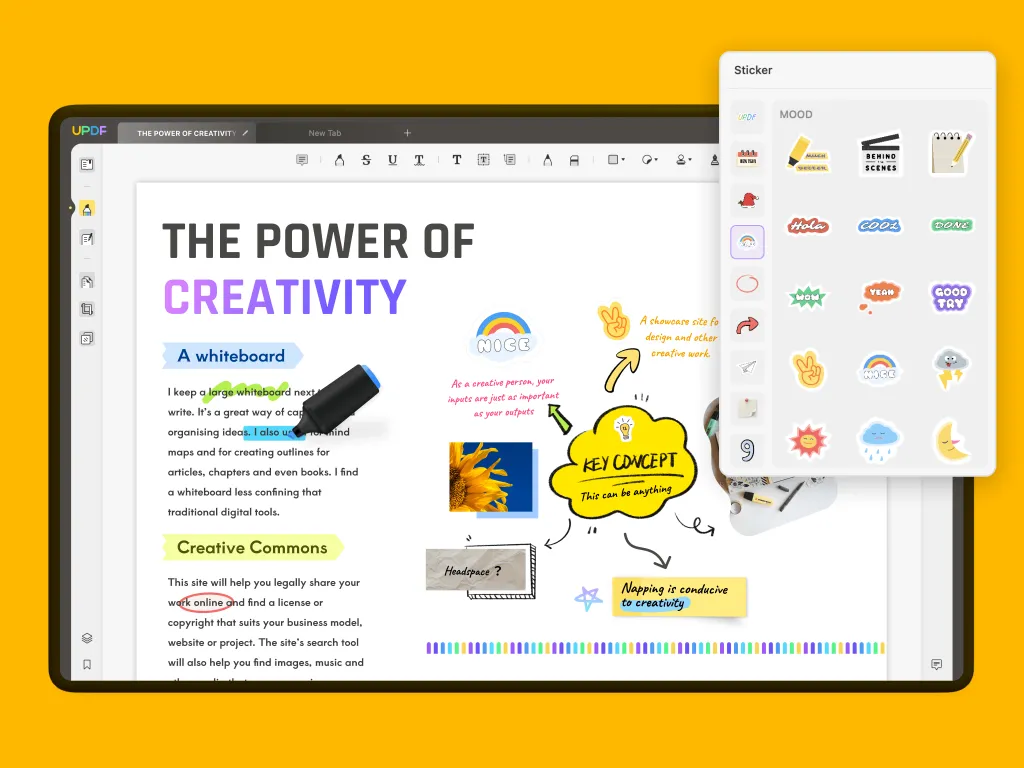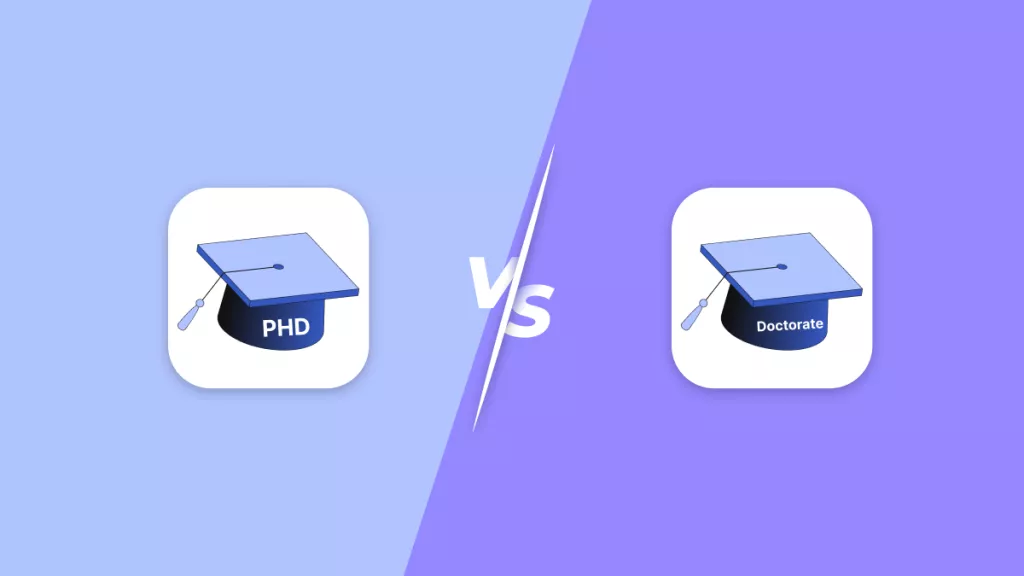Trying to decide between a liberal arts college and a university for your higher education can be hectic. Both of these options offer unique benefits and considerations to weigh. While universities often have larger class sizes and a wider range of academic programs, liberal arts colleges tend to offer smaller, more personalized learning environments. Explore the key differences in Liberal arts college vs university comparison and determine which suits you best.
Part 1. What is a Liberal Arts College?
Unlike universities that offer specialized programs in specific areas of study, liberal arts colleges typically provide a general education curriculum that covers a wide range of subjects. It prioritizes a broad-based education in various fields and aims to prepare students for various careers and to develop transferable skills, such as problem-solving, communication, and analytical thinking.
They also offer experiential learning opportunities like internships, study abroad programs, and undergraduate research projects. These experiences provide students with opportunities to apply their knowledge to real-world scenarios, helping them develop practical skills that can benefit their future careers.
Part 2. What is a University?
Whether public or private, it is an educational institution that offers a variety of undergraduate and graduate degree programs across numerous academic fields. Universities offer liberal arts and sciences and specialized programs in fields such as medicine, law, business, engineering, and the arts. Some universities offer professional programs like nursing, education, social work, and architecture.
Research and scholarship are central components of universities, with professors and students participating in original research, which fuels innovation and advances knowledge across various fields. Universities also serve as cultural centers, promoting the arts, humanities, and social sciences. Moreover, they provide a platform to frequently host events that unite scholars, artists, and the community.
Part 3. What is The Difference Between Liberal Arts College and University
When considering higher education options, two common choices are liberal arts colleges and universities. While both offer undergraduate degrees and a path toward further education, the two have distinct differences. This section will provide a detailed comparison of both in every aspect of the field to help you make the best choice for you.
1. Liberal Arts Colleges VS. Universities: Difference in Admission
LACs and Universities are different types of higher education institutions with different admission processes and requirements. The former often have a more holistic approach to admissions, focusing on factors such as extracurricular activities, recommendations, and academic performance.
While the latter may place more emphasis on academic performance, including standardized test scores and GPA. Below we have listed a few major differences between both concerning the admission:
- Academic Focus: A strong focus on undergraduate education, with a curriculum emphasizing a broad range of subjects, is the best thing in LACs.
- Admissions Requirements: LACs often place a greater emphasis on essays, recommendations, and interviews as part of the admissions process, while universities place more emphasis on standardized test scores and GPA.
- Selectivity: Arts colleges tend to be more selective than universities, with lower acceptance rates and higher average test scores and GPAs among admitted students.
- Application Deadlines: Compared to liberal colleges, universities have later application deadlines, giving students more time to decide where to apply.
- Holistic Review: Using a holistic admissions process, LACs consider many factors when evaluating a student's application, including their essays, recommendations, and demonstrated interest in the school.
2. Liberal Arts Colleges VS. Universities: Difference in Size
One of the major differences between liberal arts colleges vs. universities is their size. This difference between both can have a significant impact on the student experience. Liberal arts colleges are typically much smaller than universities' enrollment, faculty, and campus size.
However, students should consider their preferences and goals when deciding which institution suits them. Here are some of the major key differences in size between liberal arts colleges and universities:
- Number of Students: Typically, liberal arts colleges have fewer than 3,000 students, while universities can have tens of thousands.
- Campus Size: Universities tend to have larger campuses than liberal arts colleges, with more buildings, classrooms, and amenities.
- Faculty-Student Ratio: A low faculty-to-student ratio allows students to have more personalized attention from professors in LACs.
- Range of Academic Programs: Wider range of academic programs with multiple schools within the institution, each with its focus and set of programs, make universities bigger.
- Class Sizes: Smaller class sizes of liberal colleges than universities allow more personalized attention.
3. Liberal Arts Colleges VS. University: Difference in Majors
When it comes to the majors, while differing in various ways, universities offer a wider range of majors and pre-professional programs, more research opportunities, and a larger number of graduate programs.
Liberal arts colleges, on the other hand, offer a more focused education in the liberal arts and sciences, with more flexibility in designing one's own major or interdisciplinary studies. Below mentioned are a few of the most important major differences between both:
- Breadth of Majors: Universities typically offer a broader range of majors and fields of study than liberal arts colleges.
- Pre-Professional Programs: Majors such as engineering, business, law, and medicine are typically not found at liberal arts colleges, which instead emphasize a broad-based education.
- Research Opportunities: Having a stronger emphasis on research than liberal arts colleges, universities often have large research facilities and attract renowned researchers and faculty.
- Flexibility: Liberal arts colleges offer more flexibility in designing one's major or interdisciplinary studies.
- Graduate Programs: University typically has more graduate programs than liberal arts colleges.
4. Liberal Arts Colleges VS. University: Difference in Learning
Both of these differ in terms of the learning experience they offer. LACs typically provide a more intimate and personalized educational experience, with smaller classes and a focus on interdisciplinary studies. While the others often have a broader range of programs and resources, including extensive research opportunities and large lecture-style classes.
You can, however, enhance your learning experience by easily editing and annotating PDF documents using UPDF. It makes taking notes, highlighting important information, and collaborating with others easier. Look at some of the key differences between liberal arts colleges vs. universities when it comes to learning:
- Class Size: LACs typically have smaller class sizes, which can allow for more individualized attention.
- Interdisciplinary Studies: Students get encouraged to explore a wide range of disciplines, promoting cross-disciplinary learning and critical thinking while in liberal arts college.
- Course Offerings: Universities tend to have a broader range of course offerings, including more specialized and advanced courses.
- Teaching Style: In liberal arts colleges, teaching is often more focused on discussion, critical thinking, and writing.
- Career Preparation: More extensive career services and resources, including connections with employers, internship programs, and university job fairs.
5. Liberal Arts Colleges VS. University: Difference in Teaching
As both types of institutions provide high-quality education, the teaching differences between Liberal Arts Colleges vs. Universities can impact the student experience. LACs provide a more personalized and interactive learning environment when compared to universities.
Choosing between these two types of institutions ultimately depends on individual preferences and career goals. The major differences between the teaching in both are as follows:
- Teaching Style: A more interactive teaching style is used by liberal arts colleges, which includes class discussions, debates, and collaborative projects.
- Interdisciplinary Approach: Students are exposed to various subjects and develop critical thinking and problem-solving skills in LACs.
- Personalized Attention: Strong relationships are built with professors, which can lead to mentorship and networking opportunities.
- Emphasis on Writing and Communication Skills: A little emphasis is placed on writing and communication skills in universities.
- Focus on Teaching Over Research: At Liberal Arts Colleges, faculty members are often hired primarily for their teaching abilities rather than their research accomplishments.
6. Liberal Arts Colleges VS. University: Difference in Degree
Differing in their academic offerings and degree programs, Liberal Arts Colleges primarily offer undergraduate degrees, emphasize critical thinking, writing, and communication skills, and provide a well-rounded education for various careers.
In contrast, universities offer a broader range of degree programs and professional degrees in fields. The most common and major differences related to a degree are:
- Degree Programs: Universities offer a broader range of degree programs than others.
- Specialization: Universities offer greater specialization within degree programs, allowing students to focus on a particular field or subfield.
- Research Opportunities: Universities are a better choice due to their larger size and more extensive resources.
- Class Size: Typically, having smaller class sizes in LACs allows for more personalized attention from faculty and stronger mentorship opportunities.
- Community Building: Prioritizing community building and creating a close-knit campus culture is the best in Liberal colleges.
7. Liberal Arts Colleges VS. University: Difference in Price
Among all the other things, pricing is also the big differentiating factor between a liberal art college vs. university. Generally, the former tends to have a higher sticker price than public universities, but they may also offer more financial aid packages and scholarships to offset the cost.
On the other hand, universities may have more diverse options for students, but they may also be more expensive than the former. Major differences related to the price between both include:
- Sticker Price: Generally, a higher sticker price is in LACs than in public universities, but the actual cost may vary.
- Financial Aid: More generous financial aid packages and scholarships are offered in LACs.
- Housing Costs: Housing costs may differ significantly between both, being Liberal Arts Colleges are more expensive.
- Meal Plans: Meal plans at universities are less expensive than those at LACs
- Additional Fees: Additional fees, such as technology fees or campus activities fees, that can add to the overall cost of attendance are similar for both.
8. Liberal Arts Colleges VS. University: Difference in Job Opportunities
Offering different approaches to education, both of these translate differences in job opportunities. Liberal arts colleges are often focused on providing a well-rounded education, which can be especially valuable for jobs requiring creativity.
In contrast, universities typically offer a more specialized education that can benefit students interested in pursuing a career in a specific industry. 5 major differences between universities and liberal arts colleges that relate to job opportunities are:
- Career Services: More focused and personalized career services are offered in LACs to help students identify their strengths and interests.
- Networking Opportunities: There are extensive opportunities for students to network with alums and professionals in various job industries compared to universities.
- Internships and Experiential Learning: Emphasize internships and other experiential job learning opportunities as a way to gain practical skills and experience more than universities.
- Extracurricular Activities: Universities have more specialized clubs and organizations related to specific fields or industries, thus offering greater job opportunities.
- Graduate Programs: Universities often have more extensive graduate programs, which can benefit students who want to pursue advanced jobs in their field.
Part 4. Are Liberal Arts Colleges Better Than Universities?
The question of whether liberal arts colleges are better than universities ultimately depend on the individual student's goals, interests, and learning style. Both institutions have unique strengths and weaknesses, and students should carefully consider their options before deciding.
Liberal arts colleges can be particularly beneficial for students who thrive in an intimate learning environment. On the other hand, universities can be advantageous for students interested in pursuing a specific field of study in depth, wanting to be part of a larger and more diverse student body, or aspiring to be involved in cutting-edge research projects.
When choosing between a liberal arts college vs. university, it is important to consider factors such as academic program offerings, campus culture, extracurricular activities, location, and cost. Students should also visit both institutions, talk to current students and faculty members, and carefully evaluate their priorities and learning style to make an informed decision.
So, whether liberal arts colleges are better than universities is subjective and dependent on individual student preferences. Moreover, students need to consider their academic and personal goals, visit both types of institutions, and weigh the pros and cons before planning.
Part 5. 20 Best Liberal Arts Colleges And Universities
Known for providing students with a well-rounded education in various subjects rather than focusing exclusively on a specific field of study. These institutions emphasize critical thinking and problem-solving skills, preparing students for various careers. Below, we will list 20 of the best liberal arts colleges vs. universities in the world based on their academic reputation, student outcomes, and other factors:
| Liberal Arts Colleges | Location | Universities | Location |
| Amherst College | Amherst, MA | Harvard University | Cambridge, MA |
| Williams College | Williamstown, MA | Stanford University | Stanford, CA |
| Swarthmore College | Swarthmore, PA | Massachusetts Institute of Technology | Cambridge, MA |
| Pomona College | Claremont, CA | California Institute of Technology | Pasadena, CA |
| Wellesley College | Wellesley, MA | University of Chicago | Chicago, IL |
| Bowdoin College | Brunswick, ME | Princeton University | Princeton, NJ |
| Middlebury College | Middlebury, VT | Yale University | New Haven, CT |
| Haverford College | Haverford, PA | Columbia University | New York, NY |
| Carleton College | Northfield, MN | Duke University | Durham, NC |
| Harvey Mudd College | Claremont, CA | University of Pennsylvania | Philadelphia, PA |
Part 6. Bonus Tips: The Best Tool to Improve Productivity in Colleges or Universities
UPDF is an excellent productivity tool that can benefit students in liberal arts colleges and universities. A powerful PDF editing tool allowing students to manage PDF documents efficiently. It provides a wide range of editing tools that can help students easily edit their PDF documents. These tools include text editing, image editing, page management, and document conversion.
Windows • macOS • iOS • Android 100% secure

This innovative tool can handle large PDF documents quickly and efficiently. This feature allows students to perform quick edits and annotations without lag, improving their productivity and efficiency. Moreover, UPDF is compatible with various platforms and offers a 50% education discount to allow students to attend college or university with a better approach. Let's have a glaze at its various features that define this tool in a much better way:
- Blazing-Fast: A high-performance application that can handle large PDF documents without slowing down. It allows students to perform quick edits and annotations, saving time and effort.
- One Account for All Devices: PDF documents can be accessed on any device with just one account. It makes it easy for students to work on their assignments and projects from anywhere, at any time.
- UPDF Cloud: Cloud-based storage solution that allows students to store their PDF documents securely. With this, you can ensure that students can access their documents from any device with an internet connection.
- User-Friendly Interface: UPDF's interface is intuitive and easy to use. The tool's user-friendly design enables students to easily navigate and edit PDF documents, making their work more productive and efficient.
- Fully Optimized PDF Tools: Comes with a range of fully optimized PDF tools, including text editing, image editing, page management, and document conversion. It also allows annotating options such as adding sticky notes, underlining, stickers, and stamps.
Final Words
Now, you know all differences in the Liberal Arts College vs University comparison, the decision between attending a liberal arts college or university ultimately comes down to your personal preferences and goals. When deciding, it is important to consider factors such as your intended major, career goals, learning style, and social preferences. Additionally, visit both institutions to understand the academic and social atmosphere better.
Likewise, the most important thing when choosing a college or university is to consider which will provide you with the more education and experiences you need to achieve your goals and thrive in your personal and professional life. Moreover, we recommend using UPDF to help you easily edit, annotate, and convert PDF files and work better on your college and university assignments.
Windows • macOS • iOS • Android 100% secure
 UPDF
UPDF
 UPDF for Windows
UPDF for Windows UPDF for Mac
UPDF for Mac UPDF for iPhone/iPad
UPDF for iPhone/iPad UPDF for Android
UPDF for Android UPDF AI Online
UPDF AI Online UPDF Sign
UPDF Sign Edit PDF
Edit PDF Annotate PDF
Annotate PDF Create PDF
Create PDF PDF Form
PDF Form Edit links
Edit links Convert PDF
Convert PDF OCR
OCR PDF to Word
PDF to Word PDF to Image
PDF to Image PDF to Excel
PDF to Excel Organize PDF
Organize PDF Merge PDF
Merge PDF Split PDF
Split PDF Crop PDF
Crop PDF Rotate PDF
Rotate PDF Protect PDF
Protect PDF Sign PDF
Sign PDF Redact PDF
Redact PDF Sanitize PDF
Sanitize PDF Remove Security
Remove Security Read PDF
Read PDF UPDF Cloud
UPDF Cloud Compress PDF
Compress PDF Print PDF
Print PDF Batch Process
Batch Process About UPDF AI
About UPDF AI UPDF AI Solutions
UPDF AI Solutions AI User Guide
AI User Guide FAQ about UPDF AI
FAQ about UPDF AI Summarize PDF
Summarize PDF Translate PDF
Translate PDF Chat with PDF
Chat with PDF Chat with AI
Chat with AI Chat with image
Chat with image PDF to Mind Map
PDF to Mind Map Explain PDF
Explain PDF Scholar Research
Scholar Research Paper Search
Paper Search AI Proofreader
AI Proofreader AI Writer
AI Writer AI Homework Helper
AI Homework Helper AI Quiz Generator
AI Quiz Generator AI Math Solver
AI Math Solver PDF to Word
PDF to Word PDF to Excel
PDF to Excel PDF to PowerPoint
PDF to PowerPoint User Guide
User Guide UPDF Tricks
UPDF Tricks FAQs
FAQs UPDF Reviews
UPDF Reviews Download Center
Download Center Blog
Blog Newsroom
Newsroom Tech Spec
Tech Spec Updates
Updates UPDF vs. Adobe Acrobat
UPDF vs. Adobe Acrobat UPDF vs. Foxit
UPDF vs. Foxit UPDF vs. PDF Expert
UPDF vs. PDF Expert








 Enola Miller
Enola Miller 


